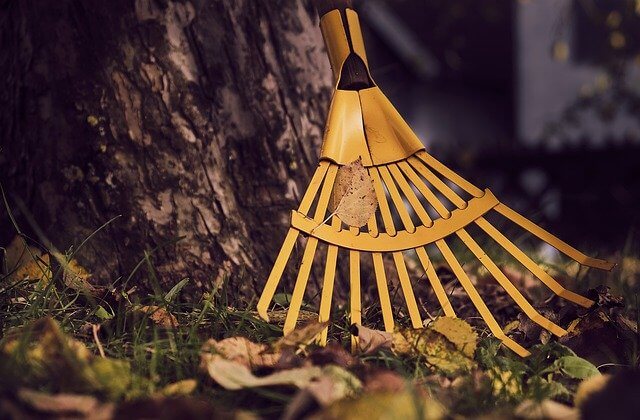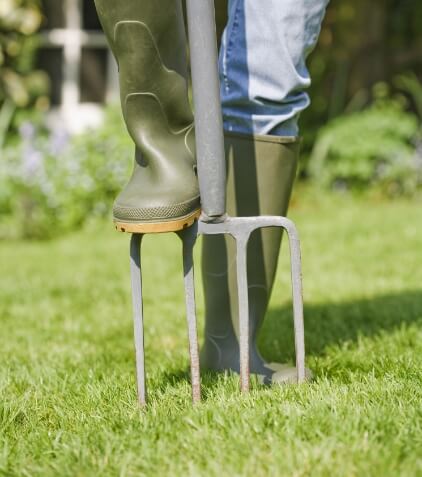
October 10, 2022
As the nights begin to draw in and the temperature drops, it’s time to start examining your lawn – and after the summer we’ve just had, there may be some obvious signs of wear-and-tear. Even the best-maintained lawn may appear a little fatigued after everything nature has thrown at it this year. Fortunately, you can take plenty of practical steps to help your lawn recover and improve health, ready for the cold weather and possible snowfall.
We recommend starting your lawn preparation in late September, October or November. Begin by collecting dead leaves and debris, then give the lawn a rake. If needed, mow the lawn a final time to tidy it up but keep the blades high to avoid damaging the grass.

Aeration is one of the most important jobs you can do for your lawn right now. This is particularly important in heavy clay soils, which may be rather compacted. Aeration allows air, water and nutrients to penetrate the grass roots, helping the turf to remain healthy and strong. If you don’t have a garden fork or aerator, you can make some small holes in the lawn with a garden trowel. It is vital to action this during autumn as the ground is moist but not soggy.

Bare patches are a common problem in lawns, particularly if they get a lot of use. If you have any small bald patches, now is a good time to reseed them. To do this, rake out the area to loosen the soil, then sprinkle over some grass seed. Gently rake the seed into the soil, then water it well. Keep the area moist until the grass has germinated and is starting to grow once more.

As the weather gets wetter, it’s essential to ensure that your drains are clear and functioning correctly. Blocked drains can cause flooding, so it’s worth ensuring that all drainage ditches are clear and free from debris, preventing waterlogging.
Edging your lawn may not be required for winter prep, but it’s ideal for keeping your turf looking neat and tidy. At the same time, you prevent grass from invading flower beds and other garden areas. To edge your lawn, use a half-moon edging iron or a spade to cut along the edge of the lawn. Be sure to make a clean, straight line for a neat finish.

Once you’ve finished tidying and edging your lawn, give it a good feed with an autumn lawn feed. Fertilising your lawn in autumn helps to replenish the nutrients that have been depleted over the summer months. This gives the grass a much-needed boost, enabling it to remain healthy and green throughout winter. When choosing a fertiliser, look for one that’s high in nitrogen. This nutrient is most beneficial for lawns at this time of year.

By following these tips, you can help your lawn to recover from the summer months and remain in good condition to withstand the winter weather. Here at George Davies Turf, we have provided premium products and outstanding service for homeowners, businesses and local authorities since 2001. In that time, we have grown exponentially and now sell 1.5 million rolls of freshly cut grass every year. George Davies Turf is dedicated to providing you with the freshest turf possible, whether that’s for your garden, commercial property, new build house, or sports venue.
Be sure to read our article can you lay turf in winter? for a more in depth guide into the benefits of laying turf in colder conditions.
For more advice, please don’t hesitate to get in touch with our experts by contacting us.